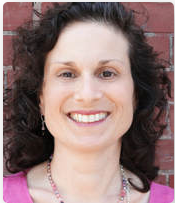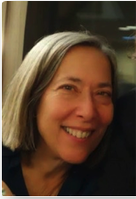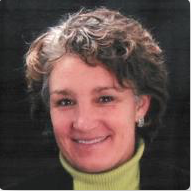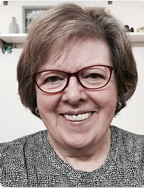In 2017, Dr. Audrey Stillerman and three other women from the Chicago healthcare community founded the THEN Center.Its goal is lofty: By 2025, it wants every graduating student in medical and health sciences across the United States to apply core concepts of childhood adversity, neurobiology, resilience and health equity into their work.

Today, the THEN Center (The Collaborative Study of Trauma, Health Equity and Neurobiology) is well on its way. Its founders are working towards collaborating across healthcare disciplines and with community advocates to meet patients’ unmet needs, ensure their safety, strengthen families’ bonds and help families who have experienced trauma manage triggers, according to Stillerman.
To assist them on that path, the group recommends a number of supports — referring parents to evidence-based parenting programs to prevent childhood adversity, screening parents for their own history of ACEs, recommending trauma-focused therapy for adversity, as well as yoga, neurofeedback, art, singing, to name several.
These aspirations were borne out of a light-bulb moment experienced by Stillerman when she learned about the CDC/Kaiser Permanente Adverse Childhood Experiences Study (ACE Study), and the unusual work that one of her co-founders, Dr. Pat Rush, began in her practice 20 years ago.
Stillerman knew instinctively that there were deeper reasons why some of her patients did well and others did not, she says. And then a colleague shared with her the ACE Study, which tied 10 types of childhood trauma to adult onset of chronic illness in more than 17,000 adults.
“When I read the ACE Study, I just about fell over,” says Stillerman, a family physician in the Department of Family and Community Medicine at the University of Illinois Hospital and Health Sciences Sytem in Chicago. “I had worked mostly with underserved populations, so I certainly knew that there were community-level and structural reasons that people weren’t doing well. But the ACE Study really articulated what was going on in their personal spheres, and in their growing up and in their homes that really explained a lot of what I had been observing.”
The ACE Study is part of ACEs science, what is sometimes called a “unified science” of human development that recasts our understanding of how to address our chronic health issues, and solve our most intractable problems, such as poverty and homelessness, as well as childhood trauma. It comprises five areas of research:
- the epidemiology of adverse childhood experiences (ACEs),
- the neurobiology of toxic stress (the brain),
- the biomedical consequences of toxic stress (the body),
- the epigenetic consequences of toxic stress (passing from parent to child),
- and resilience research.
Others call this “the theory of everything” in human development or NEAR science (neurobiology, epigenetics, ACEs, resilience).
Stillerman went on a mission to study all the related research she could find and to spread the word to colleagues far and wide. But she hit a wall. “What I noticed was that many, many, many of my physician colleagues had no idea what I was talking about. They hadn’t read the [ACE] Study. They hadn’t heard about the study,” she says.
So, in 2016, Stillerman and her cofounders began discussing a problem they all had been thinking about for some time: “It really became clear that we had to figure out a way to bring this into the mainstream of our profession,” she says. “I and my colleagues really feel strongly that we have got to figure out a way to make this science part of the vernacular, or we’re just not going to be able to do what we are all hoping to do in terms of helping people be healthy.”
Even now, things haven’t changed much. “I went into a group of 100 local physicians last Fall and asked how many people were familiar with the ACE Study, and five people raised their hands!,” she says.

Stillerman and her co-founders — which include Dr. Mardge Cohen and registered nurse Kathleen Weber — have decades of experience that support developing the components of the center, including their approaches to trauma, health equity and neurobiology. (Cohen now lives in Boston and Rush in Michigan, but they are all in regular phone communication.)

Rush, now retired from clinical practice, was an internal medicine physician and in academic medicine for 40 years at Cook County Hospital, Rush Medical Center and University of Chicago. She says that early on in her training in the 1970s, she kept observing a pattern that is now recognized as metabolic syndrome. Many patients who developed hypertension would later on develop diabetes and then subsequently they would develop heart disease. At the time, Rush says, she wondered, “How come we don’t have a model that understands that evolution of disease within an individual person?”

She had another pivotal observation in the mid-1990s. “I noticed patients who had very stressful events in their life — a car accident, a death or loss of a family member, etc. — would often three to six months later all of a sudden get a new disease. And I thought what is that all about? I can’t be the first person to figure this out.”
When Rush was about to turn 50, some 20 years ago, she took a leap of faith . She left a comfortable position as an executive at Rush Medical School to try and understand the engine driving disease in patients.“I thought, ‘I can stay here and have a nice retirement, but I am never going to figure this out.’ I could see medical care was trending toward shorter and shorter visits and less conversation with patients, and more time of the patient visit was devoted to electronic medical records,” she says.
So when she opened her practice nearly 20 years ago in Oak Park, Ill., Rush tried out some unconventional ways of learning about her patients. Instead of simply taking a medical history, Rush told them, “What I want to do is talk about chronic illness, and if you have any, I want to talk about how that happened in your life.”
Asking that question was revelatory: “When patients started telling me their stories, I thought, ‘Oh my god, there’s all this trauma and I don’t know what to do, how to talk about it without retraumatizing them!’”
That began years of research and her development of a pilot protocol into the underpinnings of trauma based on talks with 500 of her patients who were asked the question: “How was growing up for you?” Unlike patients who said that things were pretty much okay, her patients who responded that it was pretty stressful growing up all had complex chronic diseases, according to the attached report of a presentation Rush gave in 2018.
Rush’s earlier experience — seeing the connection between extremely stressful events in a person’s life and the onset of a new health problem — also inspired her to use a timeline with patients that reflects stressful events and the onset of health conditions.
A timeline of the lifespan is among the recommendations that Stillerman suggests in an article she wrote entitled, “Childhood adversity & lifelong health: From Research to Action,” that appeared in the Nov. 2018 issue of the Journal of Family Medicine. It serves as the THEN Center’s call to action.
Although the THEN Center has a tiny funding source, says Stillerman, it is largely funded by the cofounders with in-kind donations by its advisors. She and her colleagues see it as a labor of love. What it may lack in funding is made up by a stellar group of advisors, such as the well-known psychiatrist and trauma specialist Dr. Bruce Perry, a psychiatrist and fellow of the Child Trauma Academy. Perry does training on a modality he helped develop, the Neurosequential Model of Therapeutics.
The THEN center achieved three of its five goals last year, says Stillerman, including expanding its website, providing free education for medicine healthcare faculty and students, and beginning to develop graduate level curricula. Stillerman explains that they offered a number of free classes covering trauma, health equity and neurobiology, as well as workshops on neuroregulation. Classes were offered to students at University of Illinois, Rush Medical School and Loyola. And students from schools of medicine, pharmacy, public health, dental and nursing participated. A faculty development workshop on trauma, health equity and neurobiology was presented to 70 faculty members from public health, medicine, nursing social work and psychology.
The THEN Center has developed basic principles of graduate level curricula, which they’re hoping to finalize over the next 18 months, according to Stillerman. (For more details about meeting those goals and their work see the attached report.)
The THEN center’s founders are investigating the prospect of offering regular training around the Center’s principles to students and faculty at University of Illinois College of Medicine. “I’m in the process of having a conversation with someone in my department, the Department of Family Medicine, to see whether we can offer five hours of teaching for medical students in their third year,” says Stillerman.
“I think the goal of four of us is not to reinvent the wheel, but really to enhance what’s happening,” says Stillerman. “We’re starting out at the local level. We’ve thought about what can we make happen in the city of Chicago as we have these larger conversations.”





Comments (1)